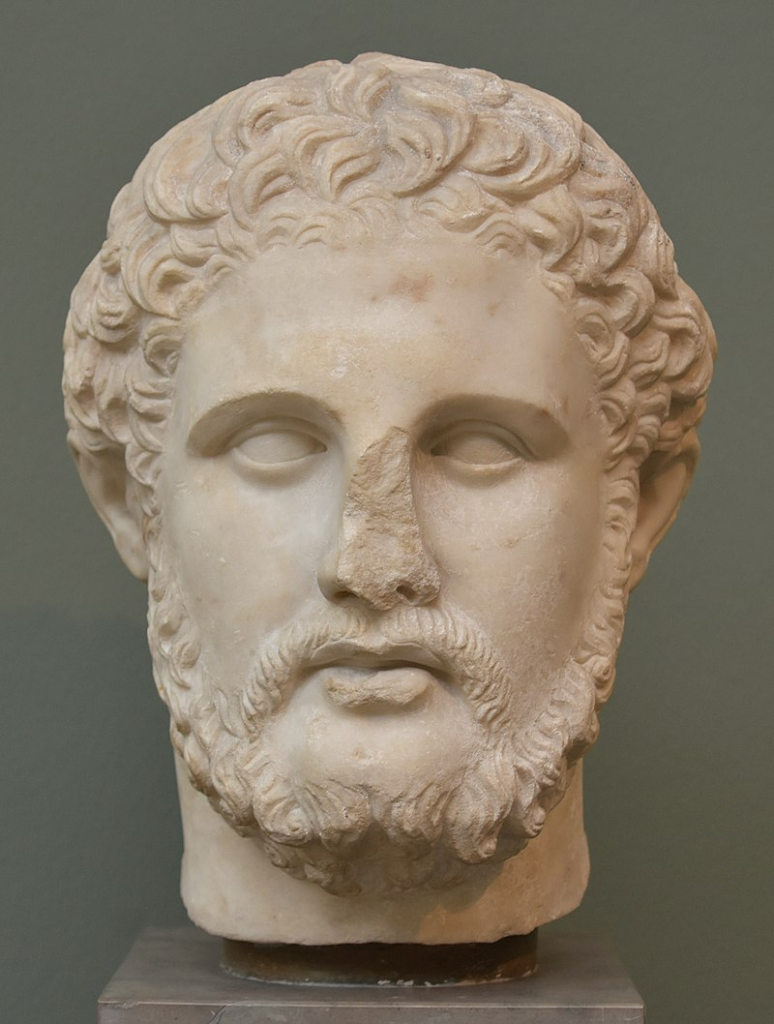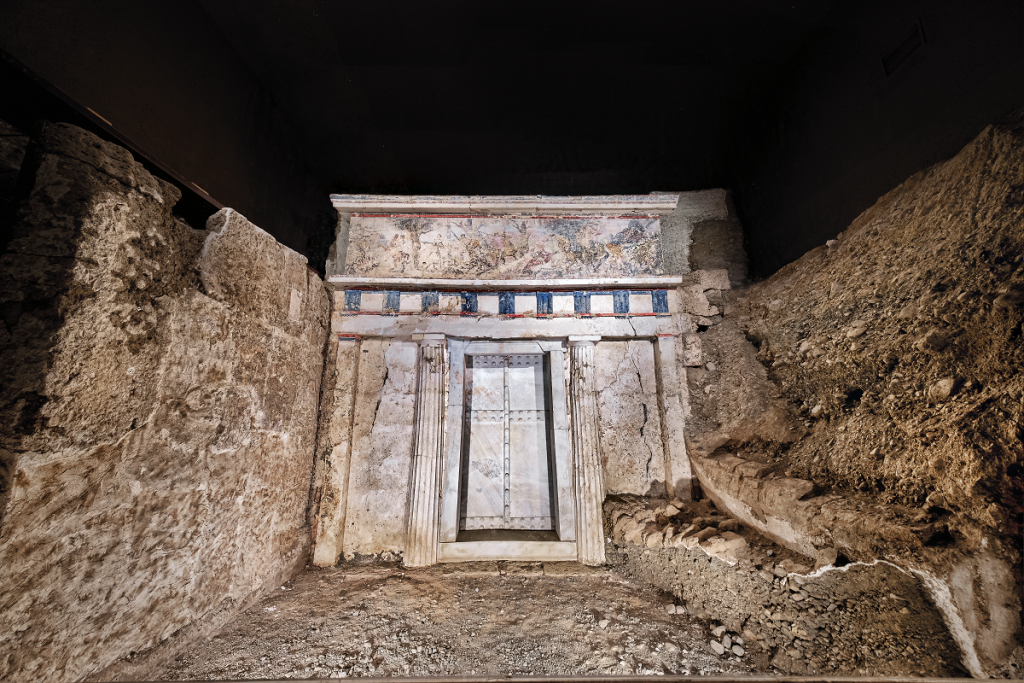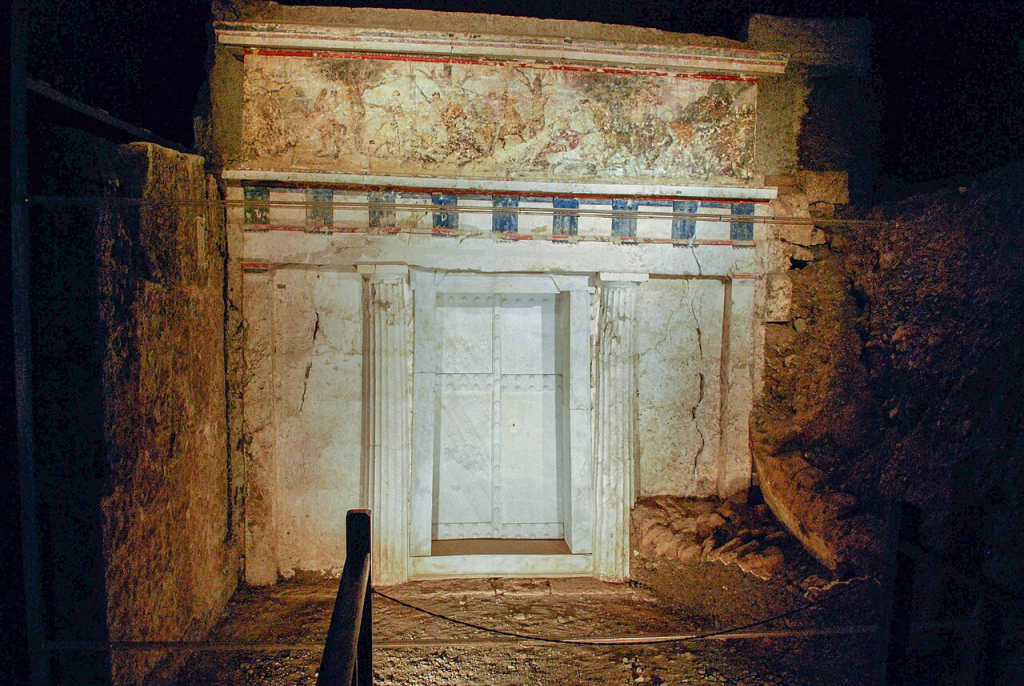The Museum of the Royal Tombs of Aigai (Vergina) stands as a remarkable testament to the rich history of the ancient Kingdom of Macedon. Nestled 75 km west of Thessaloniki, Greece, this underground museum showcases the royal tombs constructed by the Macedonians at Aigai. Among the illustrious burials is that of Philip II of Macedon, father of Alexander the Great, whose remains lie within a golden chest adorned with the “Vergina sun” motif. This masterpiece of ancient architecture and historical significance was inscribed on the UNESCO World Heritage List in 1996, solidifying its place in European civilization’s legacy.
The Royal Tombs in Vergina
In this section, we will delve deep into the heart of the Museum of the Royal Tombs of Aigai (Vergina) and unveil the awe-inspiring secrets of the royal burial cluster. From the opulent tomb of King Philip II to the intricate treasures that accompany him in the afterlife, we will explore the remarkable history and significance of these regal resting places.
Aigai: The Ancient Capital
Aigai, often transliterated as Aegae, served as the original capital of the ancient Kingdom of Macedonia from the 7th century BC until the early 4th century BC when the seat of government moved to Pella. The region was inhabited since the 3rd millennium BC and thrived as a densely populated city during the 11th century, primarily known for its livestock farming communities. The name “Aigai” itself means the “land of many goats.”

According to myth, Perdiccas I, a Dorian Greek hailing from Argos in the Peloponnese, founded Aigai as the capital, ascending to the throne of Macedonia and laying the foundation for the Argead dynasty, also known as the Temenid dynasty. Perdiccas claimed ancestry from the legendary hero Heracles (Hercules) through the mythical figure Temenos, King of Argos.
A Flourishing Metropolis
The 6th and 5th centuries marked Aigai’s golden age, becoming the most prominent city in Macedonia. Its inhabitants enjoyed a luxurious and cultured lifestyle, as evidenced by the ornate utensils, jewels, and arms discovered from this era. Masonry, goldsmithing, and trade thrived, attracting significant artists and thinkers of the time, including the renowned playwright Euripides, who presented his last tragedies in the city.

Even after the capital’s relocation to Pella, Aigai retained its religious and ceremonial significance, continuing to serve as the burial site for many Macedonian kings, particularly during the reign of Philip II and Alexander the Great. Tragically, it was within the city’s theater during an extravagant celebration for his daughter’s wedding that Philip II was assassinated.
The Fall and Rediscovery
Aigai’s glory waned during the time of the Diadochi, Alexander the Great’s successors, and met its downfall with Macedonia’s conquest by the Romans. The city was sacked, its walls demolished, and important landmarks destroyed. Though it remained inhabited, it eventually declined during the first centuries AD.

The rediscovery of Aigai began in the 19th century, with the ruins of the ancient city found near Vergina in northern Greece. Among the most significant finds were the royal palace and an extensive necropolis, the latter housing the presumed tomb of King Philip II. The archaeological site was inscribed on the UNESCO World Heritage List in 1996, recognizing its exceptional architecture and historical importance.
The Archaeological Site in Vergina
In this part we will focus more on characteristics of the archaeological site. We will share with you detailed information about Vergina, which is of great importance for the world of archeology.
The Birth of Vergina
Vergina, a small town, was established in 1922 by Greek refugees from Asia Minor after the Greco-Turkish War. It was named after a legendary queen, and its location largely corresponds to that of the ancient Macedonian capital.

The initial excavations began in 1861, but they had to be paused due to the risk of malaria. Resuming in 1937, the University of Thessaloniki led extensive excavations, revealing a large part of the palace and the city.
The Magnificent Palace of Philip II in Vergina
Built during the reign of Philip II of Macedon, the palace at Aigai was a monumental structure, possibly comprising two or three storeys. It boasted lavish decorations, with walls adorned by impressive frescoes and floors adorned with intricate mosaics. The centerpiece was a grand square peristyle, enclosed by a colonnade and adorned with elaborate friezes.
Identification of Aigai
The definitive identification of the ancient site as Aigai came in 1977, thanks to the work of British historian N. G. L. Hammond and Professor Manolis Andronikos. The excavation of the “Great Tumba” led to the discovery of an impressive burial cluster containing four tombs, two of which remained undisturbed and held significant historical and artistic grave goods.

The largest of these tombs was conclusively identified as the burial place of King Philip II, who was assassinated in the city in 336 BC. Various studies have consistently confirmed the identity of his cremains.
Exhibition Areas in Vergina
The museum showcases a dazzling array of artifacts from the royal tombs, providing visitors with a glimpse into the opulent life of the Macedonian royalty.
Treasures from Philip II’s Tomb

Among the treasures found in the tomb of Philip II were a golden larnax adorned with the “Sun of Vergina” motif, which contained the king’s bones. Additionally, an intricate gold burial wreath, a silver and gold diadem with the Heracles knot, and various silver and bronze vessels from the funeral feast were discovered. The burial also contained carved ivory ornaments from the funeral couch, gold armor and greaves, ivory inlaid shields, weapons, ivory reliefs, jewelry, and terracotta votive figurines.
Royal Tombs and Necropolis

The “Great Tumba,” housing Philip II’s remains, is the most illustrious monument from Aigai’s necropolis. However, it is not the only significant burial site. The “Cemetery of the Tumuli,” the core of the archaeological site, holds over 500 tumuli, with some dating back to the 11th century BC. The Archaic necropolis features pit graves from the early 6th to early 5th century BC, while the Classical period necropolis dates to the 5th and 4th centuries BC. Throughout the area, Hellenistic-era graves can also be found.
Excavations continue to reveal new finds, including the “Cluster of the Queens,” the “Cluster of the Temenids,” and more, providing a deeper understanding of the rich history and culture of ancient Macedonia.
Conclusion
The Museum of the Royal Tombs of Aigai (Vergina) is a remarkable testament to the rich history and culture of ancient Macedon. Its exhibitions offer a captivating journey through time, unearthing the secrets of the past and providing invaluable insights into the lives of the Macedonian rulers and their people. This archaeological marvel serves as a reminder of the enduring legacy left behind by one of history’s most fascinating civilizations.



